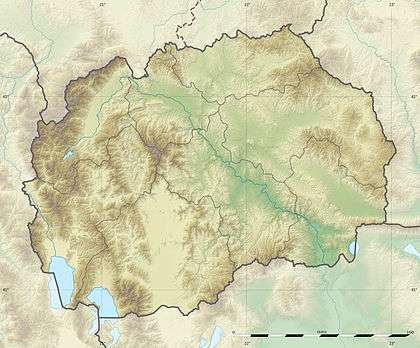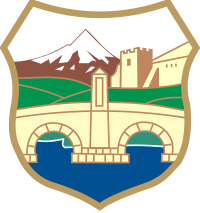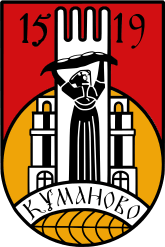Skopska Crna Gora
| Skopska Crna Gora | |
|---|---|
|
Turkish: Karadağ Albanian: Malet e Karadakut | |
|
| |
| Highest point | |
| Elevation | 1,651 m (5,417 ft) |
| Coordinates | 42°11′24″N 21°26′24″E / 42.19000°N 21.44000°ECoordinates: 42°11′24″N 21°26′24″E / 42.19000°N 21.44000°E |
| Geography | |
 Skopska Crna Gora Location of the mountain within the Republic of Macedonia | |
| Location | Republic of Macedonia and Kosovo |
Skopska Crna Gora (Macedonian and Serbian Cyrillic: Скопска Црна Гора, pronounced [skôpskaː tsr̩̂ːnaː ɡǒra], meaning "Black Mountain of Skopje", Albanian: Mali i Zi or Malet e Karadakut), also historically known as Karadağ (Turkish for "black mountain"), is a mountain range largely in the Republic of Macedonia, with smaller part in Kosovo[a]. It lies between the cities of Kaçanik (in southern Kosovo) and Skopje (in Macedonia). The highest peak is Ramno (1,651 m (5,417 ft)) in Macedonia.[1] The largest town on the mountain is Kučevište in Macedonia.[1]
Macedonian population of the region speaks the Skopska Crna Gora dialect of the Macedonian language.
Notable people
- Toma Raspasani, Albanian Catholic monk.
- Idriz Seferi, Albanian nationalist figure and guerrilla fighter.
Culture
- Monastery of St. Nikita, dating to the 14th century, with frescoes by Mihajlo and Eftihie.
References and notes
- Notes
^a Kosovo is the subject of a territorial dispute between the Republic of Kosovo and the Republic of Serbia. The Republic of Kosovo unilaterally declared independence on 17 February 2008, but Serbia continues to claim it as part of its own sovereign territory. The two governments began to normalise relations in 2013, as part of the Brussels Agreement. Kosovo has received recognition as an independent state from 110 out of 193 United Nations member states.
- References
Sources
| Wikimedia Commons has media related to Skopska Crna Gora. |
- "Skopska Crna Gora", Srpski etnografski zbornik, VI, Belgrade, 1905

